At a glance
All the questions you always wanted answers for about sun protection!
Even though sun protection is relevant all year long, I definitely feel this topic will grab people’s attention far more at the moment, with summer just around the corner…
And if there is one subject in cosmetics that raises questions, it’s definitely sun protection.
For those who followed me on the journey from my blog or on my social media to BTY ALY you already know that I’m obsessed with sun protection 365 days a year!
As I live in Dubai, I have less of a choice in the matter, but it’s not only that!
I’ll talk about about this more later, but for me, if you want to take good care of your skin, it definitely starts with good sun protection every morning.
That being said, I’m aware it’s not easy to find your way with so many sunscreens available on the market.
Which SPF protection should you choose, SPF15 or 50? With chemical or mineral filters? Do you really need to reapply your product every two hours? And what is the right amount of product to use if you want an effective anti-UV protection?
Today, let’s take a look at all these burning questions about sun protection!
Why do you need to protect yourself from the sun?
It’s almost summer and everyone wants to get a bit of a tan.
It’s clear, a tan can be very pretty, I like having one, but without effective sun protection, you risk several very unpleasant skin issues: sunburn obviously, and of course, skin cancers among the most serious effects. Compared to a few years ago, the prevention message has been heard loud and clear; when people know they’re going to expose themselves to the sun, the majority always plan to use some type of sunscreen.
But solar radiation also has a more pernicious effect on the skin on a daily basis. UV rays are present every day of the year, in all climates, even in the shade (thanks to the reverberation!) and they produce a large number of free radicals. These are harmful to your health in general. They’re responsible for various cellular dysfunctions (which in the most serious cases can lead to skin cancers) and are also responsible for premature skin ageing. Wrinkles and spots appear more quickly on the skin of people who don’t protect themselves from UV rays.
What are UV rays?
UV rays are an electromagnetic radiation sent to Earth by the Sun. They’re classified into three categories according to their wavelength: UVA (400-315 nm), UVB (315-280 nm) and UVC (280-100 nm).
UVA rays represent 95% of the UV light that reaches the Earth’s surface. They’re the ones that make the skin age faster (mnemonic: UVA, with an A as in Age). They can reach into the deep layers of the skin. UVA rays are partly responsible for signs of aging such as wrinkles, loss of skin firmness, caused by the degradation of collagen in the skin. They can also cause skin cancers. They are present all day, during all seasons (yes, even in winter) and they pass through the windows.
UVB rays represent 5% of UV radiation and they can burn the skin (UVB, with a B like Burn). They go into the upper layers of the skin. They cause tanning, sunburn, and can also cause skin cancer. They also accelerate the premature aging of the skin. They are present mainly during the hours of intense sunshine, between noon and 4 pm in the Northern hemisphere. The UVB rays are blocked by the windows but not by the clouds.
UVC rays are the most dangerous, they would literally burn us but fortunately, they are absorbed by the ozone layer (as long as it lasts!).
[…] a daily application of sunscreen is probably the best way to preserve the youth and the health of the skin!
Why a lot of people don’t like to use a sunscreen every day?
Several reasons can explain it:
– it represents one more product to apply in the morning, some people don’t like layering products and in addition, it can take a little bit of time,
– obviously, it can become expensive, especially if you’re using the right amount in order to be well protected (I’ll talk about this later in the article),
– a lot of people don’t think sunscreen is useful for them, that they don’t need it: those who live in a place where the amount of sunlight is rather low, for example; young people who are not yet affected by the first signs of skin aging don’t really see the benefits of applying sunscreen everyday neither (people with visible ageing signs such as wrinkles and hyperpigmentation are always more motivated to use a sun product in their daily routine); darker skins who think they can do without it (this is a common misconception, they also must protect themselves from UV rays, they’re even more prone to hyperpigmentation than lighter skin tones),
– the textures of sunscreen products are not always very pleasant: they can be greasy, thick (even if there has been a lot of progress these last years),
– sunscreen products don’t always look great under makeup (they can make it pill, or look super shiny),
– the white cast can be very obvious with some heavy sunscreens,
– some UV filters are quite irritating, especially if you have a sensitive skin and can also cause break-outs,
– there is a suspicion about certain UV filters, which are suspected of being endocrine disrupters (like certain chemical filters in particular).
All these reasons don’t really motivate people to apply a sunscreen every day. However, it’s proven that a daily application of a sunscreen product is probably the best way to preserve the youth and also the health of the skin!
Why apply a sunscreen daily?
As explained above, UV radiation is present every day, from the moment there is daylight. That means you’re exposed to UV rays all year round.
Protecting your skin against UV rays helps to slow down premature aging. Of course, skin aging is inevitable but you can really feel the difference with the addition of a sunscreen!
UVA and UVB rays damage the skin cells by breaking their DNA chains. Usually, DNA chains are permanently repaired by enzymes produced by the human body. But this natural mechanism can be quickly overwhelmed by prolonged sun exposure (like when your skin is exposed every day without protection).
Therefore, if they reach the deep layers skin cells (those that provide skin renewal), the production of melanin (responsible for coloring the skin), collagen and elastin decrease. The skin becomes drier and less elastic, dark spots may appear, wrinkles become deeper, the skin is sagging…
Sun filters are therefore one of the best anti-aging ingredients on the market!
And if you just stay indoors?
If you don’t leave the house, you’re protected against UVB rays that don’t pass through the windows, but not against UVA rays that will still be there, especially if you stay near a window. You don’t necessarily need to apply a very high protection, but an average SPF (between 15 and 25) helps to protect the skin from UVA rays.
What are UV filters?
UV filters are the ingredients that protect the skin from UV radiation. They are two different ones: chemical filters and mineral filters.
Chemical filters:
A chemical filter consists of molecules that react with UVA and UVB and absorb UV radiation instead of the skin. Chemical filters mimic the action of melanin, the pigment responsible for skin coloring, which is a natural filter.
The pros of chemical filters:
– they are invisible on the skin because they are quite sheer,
– they can be added into fluid, non-greasy formulas (such as fluid emulsions, fluid milks, gels or even mists).
The cons of chemical filters:
– they’re not effective immediately, you need to wait at least 20-30 minutes before being able to expose yourself to UV rays,
– chemical filters can cause allergies or irritation on more sensitive skin (especially if you apply them daily). In my case, I also noticed that some UV filters could even be comedogenic (if I apply them several days in a row, my skin breaks out),
– some are not photostable, i.e. their effectiveness decreases after a certain period of exposure to the sun. However, a non-photostable filter can be stabilized by adding other photostable filters (most sunscreen formulas have several filters for a better stability),
– some chemical filters are accused of being endocrine disruptors, i.e. they would modify the hormonal balance of the body (they would lower male fertility in particular),
– some are very polluting to the environment (they cause water pollution because they don’t dissolve in water, and they can be harmful to coral reefs as well).
The different chemical filters used in cosmetics:
– oxybenzone (nom INCI: benzophenone-3),
– benzophenone-4 (Sulisobenzone),
– benzophenone-8 (Dioxybenzone),
– BEMT or Tinosorb S (Bis-ethylhexyloxyphenol methoxyphenyl triazine),
– avobenzone or Parsol 1789 (butyl methoxydibenzoylmethane),
– 2-ethoxyethyle p-methoxycinnamate (cinoxate),
– Uvinul A+ (Benzoate de (diethylamino) hydroxybenzoyl hexyl),
– Mexoryl XL (in L’Oréal products) (drometrizole trisiloxane),
– Methoxycinnamate or octyl octinoxate (ethylhexyl methoxycinnamate),
– Salicylate or octyl octisalate (ethylhexyl salicylate),
– Octyl triazone or Uvinul T 150 (ethylhexyl triazone),
– Methyl salicylate (homosalate),
– Meradimate (menthyl anthranilate),
– Enzacamene or Parsol 5000 (4-methyl-benzylidene camphor),
– MBBT or Tinosorb M (Methylene bis-benzotriazolyl tetramethylbutylphenol),
– Octyl cyanophenylcinnamate or Parsol 340 (Octocrylene),
– Para-aminobenzoic acid (PABA),
– Ethylhexyl Dimethyl PABA oR Octyl Dimethyl PABA (Padimate O),
– Ensulizole (phenylbenzimidazole sulfonic acid),
– Parsol SLX or Polysiloxane-15 or Benzylidene malonate polysiloxane (Polysilicone-15),
– Triethanolamine salicylate or trolamine salicylate (TEA salicylate),
– Mexoryl SX (in L’Oréal products) (terephtalylidene dicamphosulfonic acid),
– Benzylidene Camphor Sulfonic Acid,
– Camphor benzalkonium methosulfate,
– 3-benzylidene Camphor.
Geographical particularity:
In the United States, sunscreens are categorized as drugs delivered over the counter, but their use is nevertheless highly regulated by the FDA and the release on the market of new molecules takes a huge amount of time.
As a result, the United States lags behind the rest of the world in terms of the latest innovations in solar ingredients and the number of chemical filters authorized on the market in the USA is only 16 (against 25 in Europe), of which only 3 protect against UVA (there are 7 in Europe).
This explains why all American skincare addicts really want to try European and Asian suncare products, which they often find superior in terms of quality and texture to those they have at home! 😉
Mineral filters:
Mineral filters, also called physical filters, have a different action: composed of an assembly of microparticles of minerals (most often white powders such as zinc or titanium dioxide), they reflect UV, like a barrier or a mirror.
The pros of mineral filters:
– they are better tolerated by the skin and ideal for sensitive skins,
– they’re effective right after you’ve applied them,
– conventional mineral filters (= non-nanos) are non polluting and not harmful for the health,
– they can be added into organic cosmetics formulas.
The cons of mineral filters:
– mineral filters are soluble in oil, which means that the formulas are often greasier than those with chemical filters,
– they are more visible and thicker (and harder to spread on the skin) than chemical filters because they are opaque powders, so they tend to leave a white cast on the skin. This problem can be resolved by reducing the size of mineral filters to micro-pigments, aka smaller particles that also reflect UV. Problem: they are nanoparticles.
– the effects of the use of nanoparticles on the human body are still unknown but many scientists warn against their use. They’re also accused of being toxic for the environment.
The most commonly used mineral filters:
– Titanium Dioxide,
– Zinc Oxide.
In a sunscreen, chemical and mineral filters are very often combined because one single filter can’t cover the spectrum of all UV rays. Using several filters makes it possible to have a better protection against the various UV rays.
There can, therefore, be several chemical filters or several mineral filters in the same product but also a mix of chemical filters + mineral filters. These mixed formulas thus combine the advantages of the different filters but also, necessarily, their disadvantages…
Are UV filters irritating for the skin?
Especially in the case of daily use, UV filters can be an irritant for sensitive skin. At least for some of them. This is a criticism that is often made with chemical filters.
Personally, mineral filters work better for me than chemical filters, which tend to make me break out after several days of consecutive use. But this is not the case with all the chemical filters. As I stated above, there are many different chemical filters and sunscreens don’t contain them all in a single formula.
Are UV filters safe?
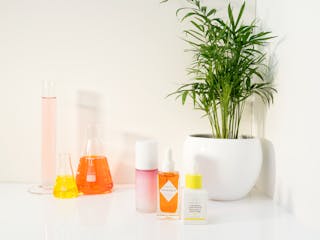 Skincare
Is the “non-toxic” cosmetics trend irrelevant?
Today, let’s talk about cosmetics’ vocabulary, marketing, and legislation. No, don’t go! I swear it’s not as boring as it sounds!
Read more
Skincare
Is the “non-toxic” cosmetics trend irrelevant?
Today, let’s talk about cosmetics’ vocabulary, marketing, and legislation. No, don’t go! I swear it’s not as boring as it sounds!
Read more
Also, living where I live, and using in my routine ingredients like exfoliating acids, or vitamin C (which as a reminder, is not photo-sensitizing but which is great to be paired with a sun protection for a great antioxidant effect for the skin), I have no choice: I must imperatively use a sun protection every day, and with an SPF30 minimum.
But I must admit that reading nearly everywhere that sun filters, especially chemicals filters are potentially carcinogenic and can also be endocrine disruptors is not really reassuring. If you add on top of that their possible impact on the environment (some chemical filters like oxybenzone and octinoxate are suspected of threatening ocean coral reefs), it doesn’t make you want to use them.
Basically, if I understood correctly what they’re accused of, the accumulation of chemical filters could have a harmful effect on those who are already sensitive to these molecules, such as a risk of cancer (specifically, it would mean that cancer is accelerated / could appear a little faster than expected for these people).
This does not mean that chemical filters cause cancer, that’s not what I mean! But if you have cases of cancer in your family, it might be better to implement a precautionary principle and avoid using too much of them and adopt mineral filters on a daily basis, for example.
Personally, that’s what I do. I prefer to use non-nano mineral filters for my daily use and for times when I need more protection (if I know I will be outdoor or during the summer), I switch to mixed formulas, with chemical AND mineral filters, because they guarantee a better protection (and because I don’t really want to get skin cancer!)(honestly, it’s a little bit overwhelming, you know. It’s sometimes feels like you have to choose between types of cancer, really? So many choices! 😉 ).
What is an SPF? And a PA?
The SPF (Sun Protective Factor):
The SPF is a measure of the level of protection against UVB. The solar protections are grouped in 4 levels of SPF:
– Low (from 6 to 10),
– Average (from 15 to 25),
– High (from 30 to 50),
– Very High (50+ or up to 100).
For the corresponding number, it’s the time it will take you “to get a sunburn”. With an SPF 50, it will take you 50 times longer to catch one than without sun protection, for example. Of course, it also depends on where you are, the climate, the degree of sunshine and the time of day. Conditions may vary. The labs advise to apply the sunscreen about 30 minutes before sun exposure to take full advantage of its protective power, and to reapply every two hours as well as before you go swimming or if you sweat a lot.
The PA:
The PA is a Japanese classification system that measures protection against UVA rays. The PA index is rated with +, which ranges from 1 to 4 (+, ++, +++ or ++++). The higher the PA, the stronger the protection against UVA. Some products may also have the UVA circled label on the bottle to indicate that they contain filters that protect against UVA.
Ideally, a sunscreen product effective against UVA and UVB rays should include on its packaging the two units of measurement: both SPF and PA (or at least indicate that it also contains protection against UVA, not just UVB). It’s not a legal obligation in Europe to indicate these two measures, nor in the United States. But they’re quite common in Asia.
Can SPF add up?
For example, if I apply an SPF35 foundation on top of my SPF50 sunscreen, do I get an SPF85?
The short answer: no, SPF ratings don’t add up, especially above 50, which is the maximum protection rating.
However, it can still be interesting to layer products with SPF because, as you’ll see below, you must apply a certain amount of product on your skin to obtain the protection/ SPF indicated on the label of your sunscreen.
However, most people don’t apply enough sunscreen and the protection they actually have on their skin is way below the value indicated on their product.
So using several products with UV filters (for example, a facial sunscreen, and a foundation or a BB Cream with an SPF on top) can add protection to your skin, or at least complete your first application of sunscreen. And it’s not easy to apply a homogeneous layer of product everywhere the first time, so combining products with sun filters increases the chances of having sufficient protection over the entire surface of your skin!
How much sunscreen should you really use?
A lot! Because to obtain the same protection index on the packaging of your sunscreen product, you need to apply 2mg of product per cm2 of skin. This is the amount that cosmetic labs use to measure a sunscreen’s protective effect.
But for me, that amount meant nothing for years. It’s hard to know what it represents for an application on the face and neck, unless you measure the surface of your face!
But I finally found a measure a little easier to use to know how much product you need to be effectively protected.
So on average, you need the equivalent of 1/4 teaspoon of product for the face alone (or 1.25ml), and 1/2 teaspoon (or 2.5ml) for the face, neck, neck and ears (this is the amount I use on me every day).
1/2 teaspoon looks like this (on the left, with a creamy texture and on the right, with a liquid texture):
And now, I know you’re going to ask me, “How is this amount of product supposed to get absorbed properly in the skin?”
Well, they’re products formulated to be used with this amount, so it’s achievable! But I have a tip: I apply my product in several layers (usually 2 layers on the face and 2 layers on the neck and ears) and it’s much easier and quicker this way.
One last thing, for those who are wondering whether a sunscreen is reusable from one year to the next. The answer is simple: no, because filters degrade from one year to the next and anyway, if you are in this situation, it’s probably because you didn’t apply enough product last year! 😉
I don’t rely on my makeup to effectively protect me from the sun.
What about daily moisturizer with SPF?
Will you be protected if you use a moisturizer with an SPF? Yes, absolutely, if you’re using the correct amount of product (see above).
Personally, I prefer to use two products separately (a moisturizer with SPF and a sunscreen on top), but if you want to save time and you already using a good moisturizing serum underneath, it’s perfectly fine (especially for combination to oily skins that don’t want to layer too many products).
And makeup with SPF?
I once believed that my foundation with SPF (or my BB cream, or my cushion SPF50) protected me from the sun and I didn’t need to use a sunscreen underneath.
Except that the problem is, as we saw earlier, you still need a considerable amount of product to be properly protected.
In the pictures below, here is the quantity of product necessary for the face with a BB cream SPF50 and a mineral powder foundation SPF30 to have the sun protection indicated on their label:
I don’t know about you, but that’s not the amount I use for my makeup! I probably use 5 times less than that (or 10 times less for the powder).
I find that the SPF indicated on the packaging of makeup products is rather misleading. This is more of a marketing argument than a real product effect, in my opinion. Personally, I don’t rely on my makeup to effectively protect me from the sun.
That being said, as I mentioned earlier, it can be a good way to add some protection. But on their own, they’re clearly not enough.
Do you need to reapply your sunscreen during the day?
The sunscreen labels are clear: you should re-apply your product every two hours to remain effectively protected.
Indeed, UV filters don’t stay put all day, they end up degrading when they’re exposed to UV rays and it is therfore necessary to reapply them regularly to maintain a good protection (same thing if you sweat a lot or if you go for a swim).
Usually, labs put this mention on the label because they know that most consumers don’t use enough product to be effectively protected. So, at least if they reapply regularly, they will end up with a decent amount of product!
But is it really necessary to re-apply every 2 hours if you use the right amount of product right from the start and also, how do you do this (especially if you wear makeup)?
Here’s what I usually do:
If I don’t really spend time outside, I don’t reapply my sunscreen during the day. I consider that the few minutes I spend in the sun during the day are not enough to degrade the product I applied in the morning. And since my first application is quite generous, I feel like I’m effectively protected.
However, if I’m outside in the sun, I reapply my product regularly. If I’m wearing makeup, I usually prefer using mists or powder products, but clearly, it’s difficult to use the right quantity. For me, these kind of products are just touch-ups and I make sure I apply enough sunscreen in the morning before going out. If I go to the beach or the pool, I don’t wear makeup and I apply my sunscreen product generously during the day.
In conclusion:
I hope I answered as many questions as possible about sun protection. I didn’t talk about the products I use in this article (it would have been way too long!) but I plan to post a bench test with all the sunscreen products I tried this year.
So if you’re interested with this topic, stay tuned for the second part of the solar festivities!
Edit 01/10/18:
I’ve written 3 other posts on the topic:
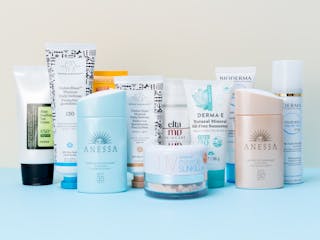 Skincare
Sunscreen guide 2018
I use sunscreens all year round because I care about my skin a lot (no big surprise so far!). As you can imagine, I’ve tried a lot of different ones and today, I’m finally going to introduce you to most of them!
Read more
Skincare
Sunscreen guide 2018
I use sunscreens all year round because I care about my skin a lot (no big surprise so far!). As you can imagine, I’ve tried a lot of different ones and today, I’m finally going to introduce you to most of them!
Read more
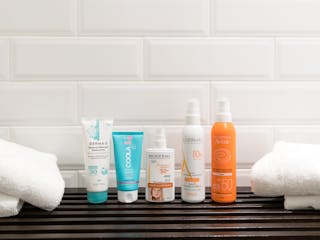 Skincare
Buying guide: reef-safe sunscreens
As you probably know, I take sun protection very seriously. And when I go on vacation, I’m particularly careful when I choose my body sunscreens. I want them to provide effective UV protection but also to be environment-friendly.
Read more
Skincare
Buying guide: reef-safe sunscreens
As you probably know, I take sun protection very seriously. And when I go on vacation, I’m particularly careful when I choose my body sunscreens. I want them to provide effective UV protection but also to be environment-friendly.
Read more
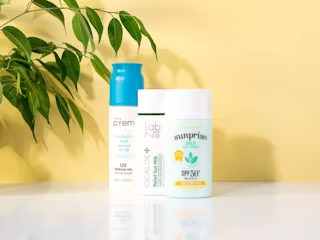 Skincare
An overview of 3 Korean sunscreens (feat. make p:rem, Labno and Etude House)
Today, I tell you more about 3 Korean sunscreens I recently tried, the make p:rem UV defense me Blue ray sun gel, the Labno Cicaloe Relif Sun Milk, and the Etude House Sunprise Mild Airy Finish.
Read more
Skincare
An overview of 3 Korean sunscreens (feat. make p:rem, Labno and Etude House)
Today, I tell you more about 3 Korean sunscreens I recently tried, the make p:rem UV defense me Blue ray sun gel, the Labno Cicaloe Relif Sun Milk, and the Etude House Sunprise Mild Airy Finish.
Read more
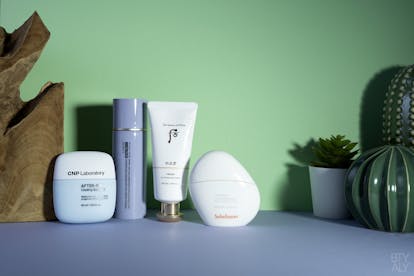
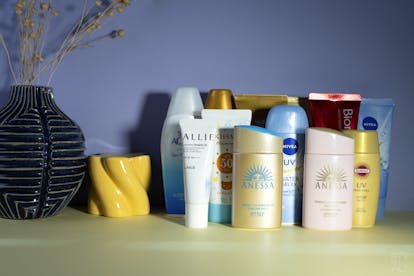
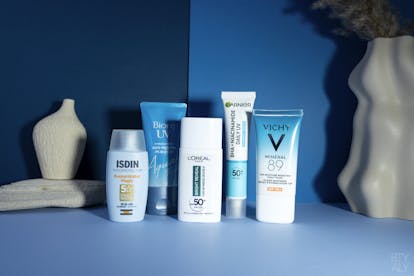
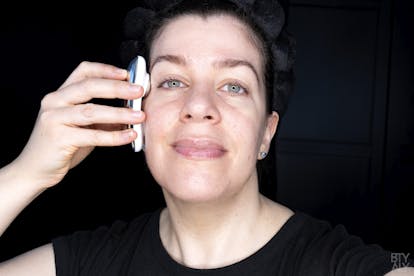
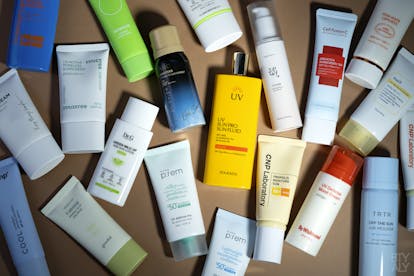
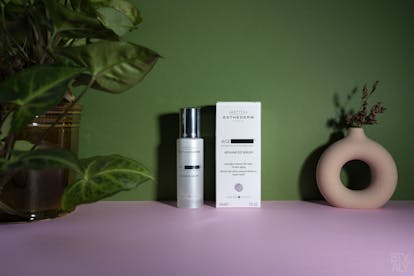
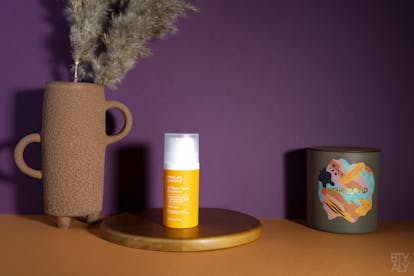
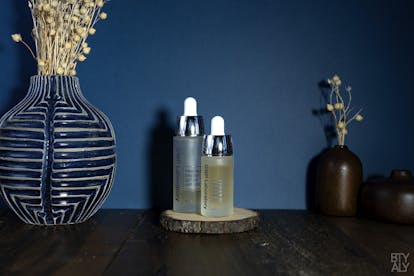
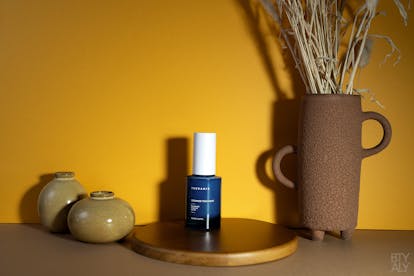
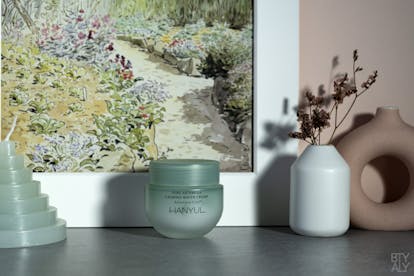
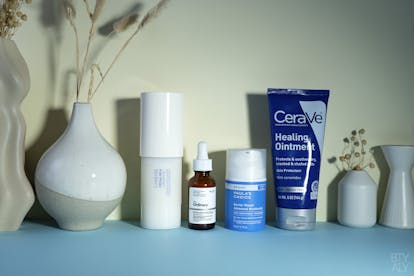
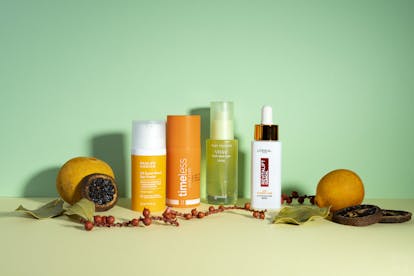
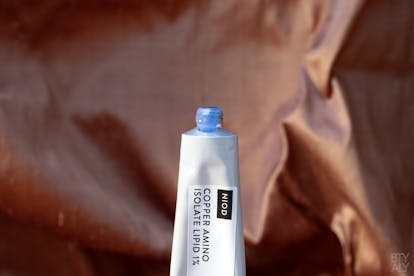
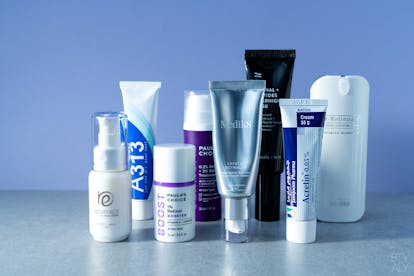
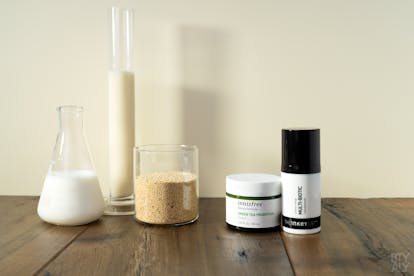

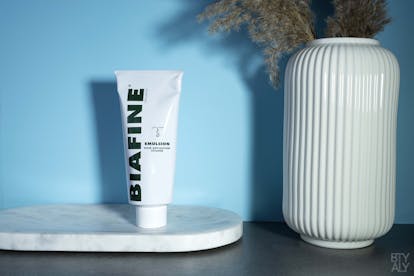
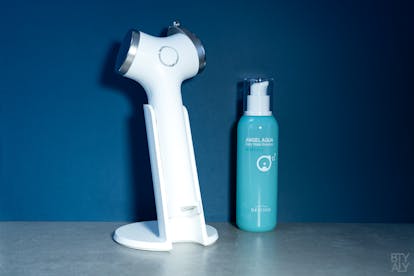
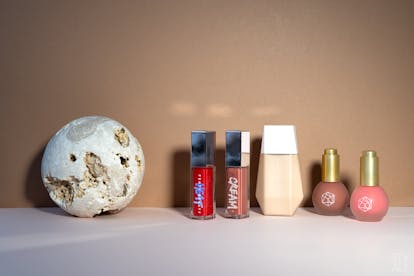
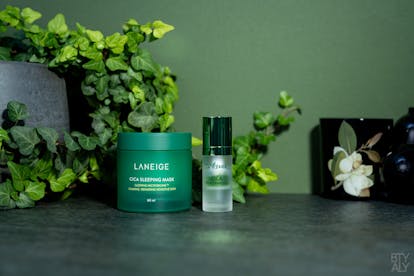
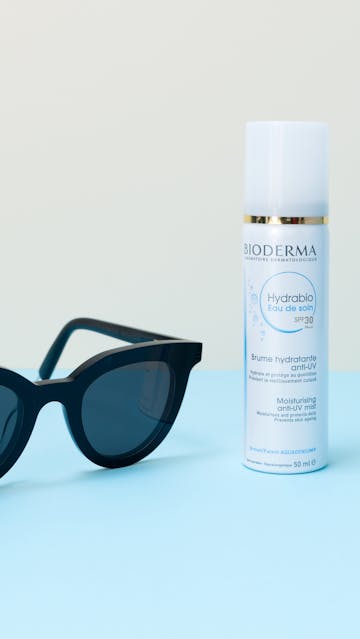

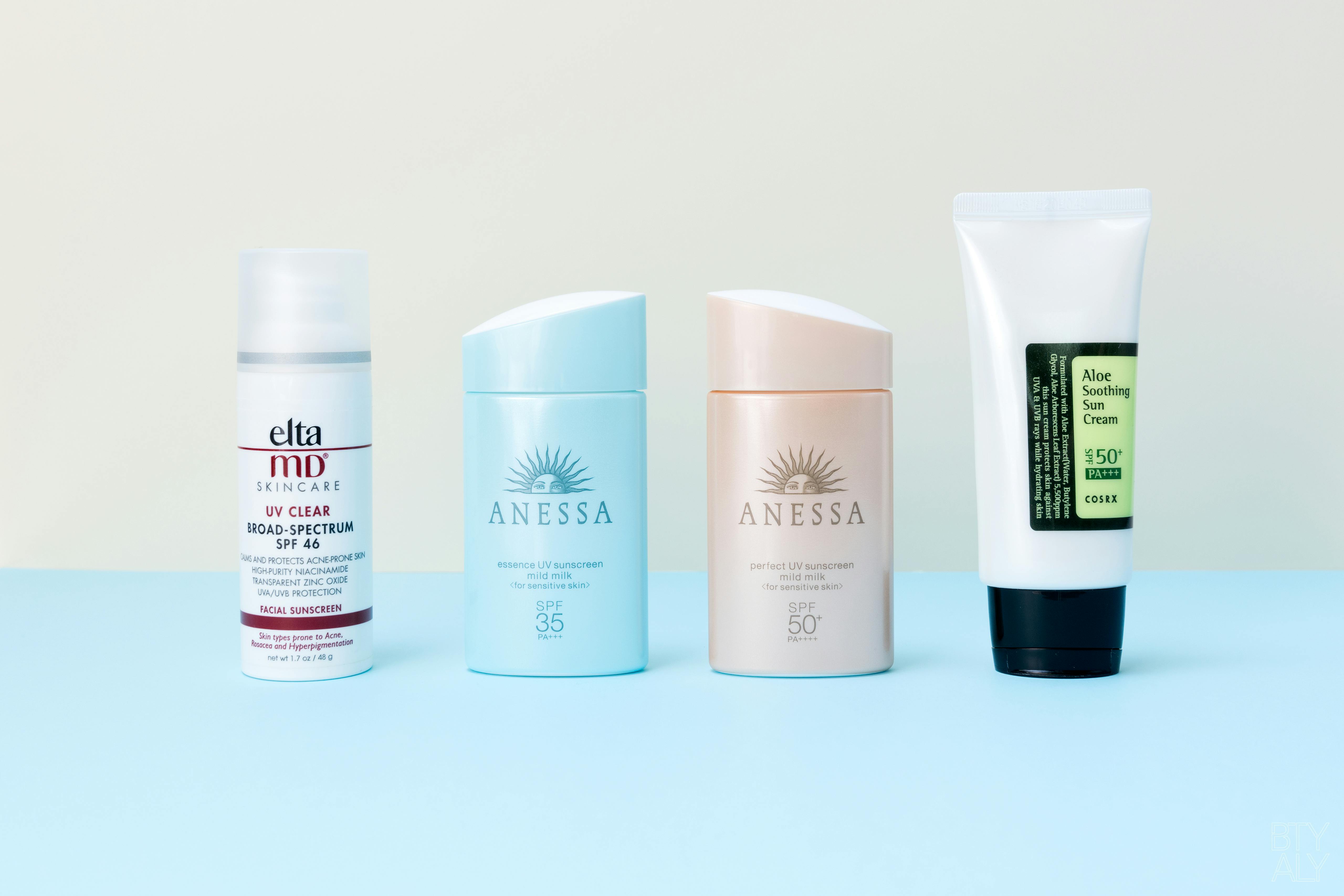
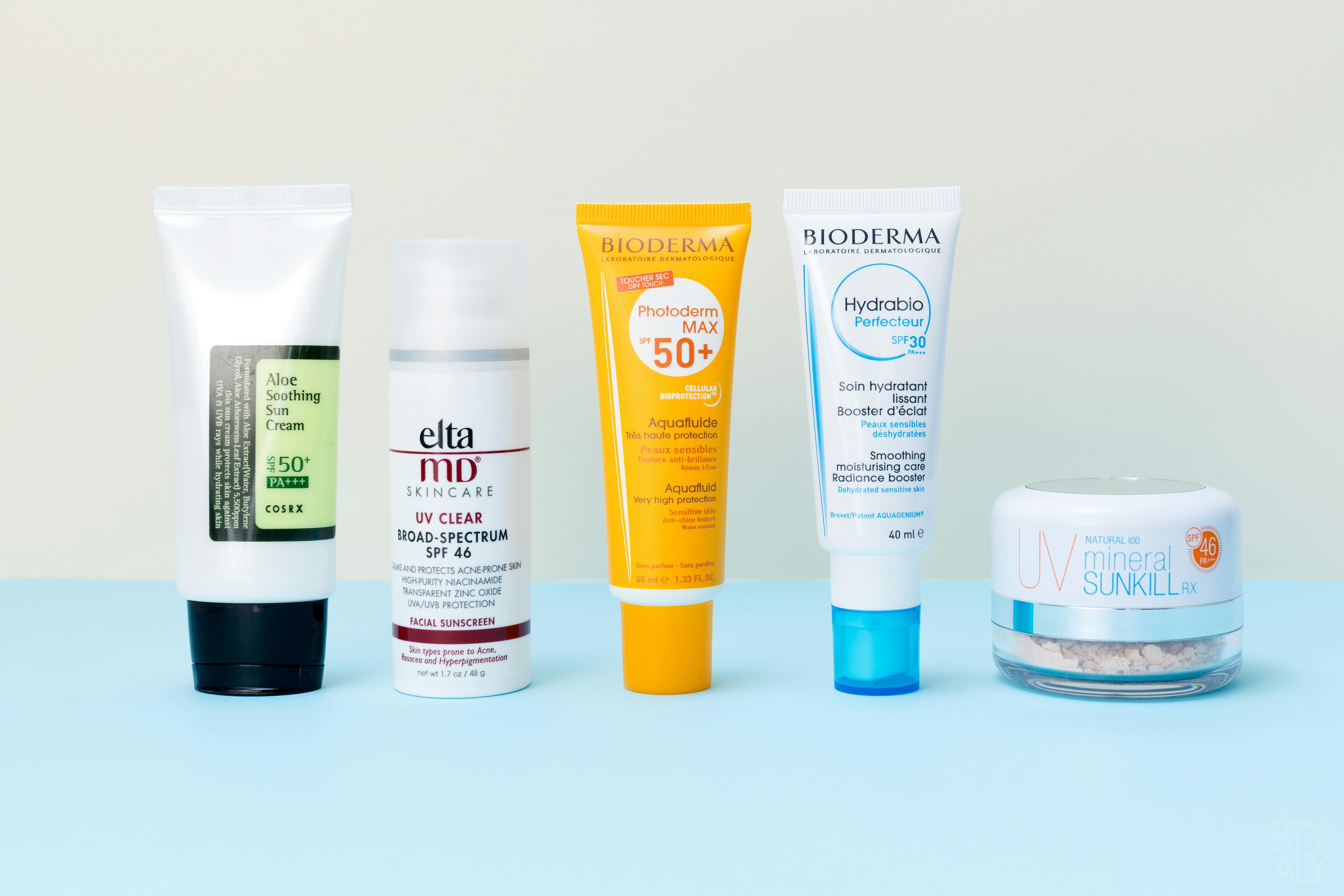
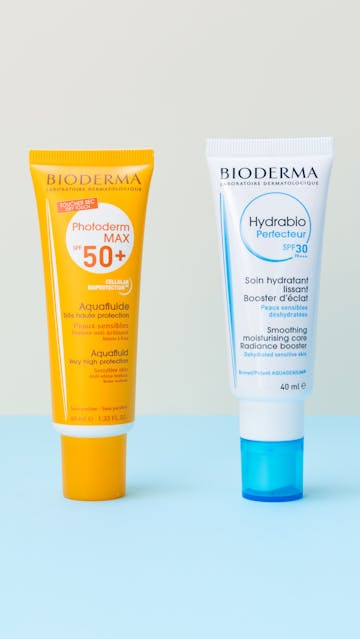
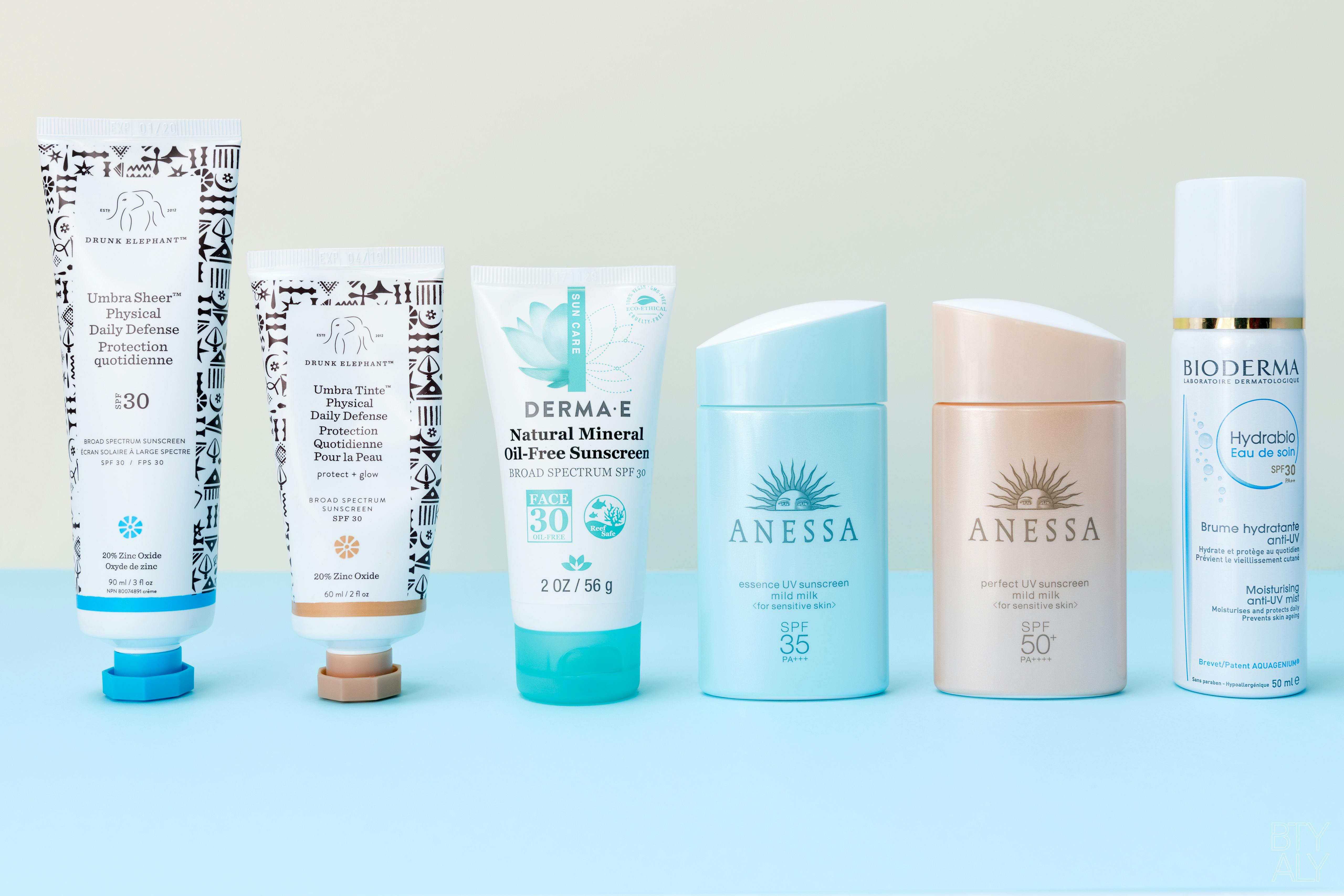
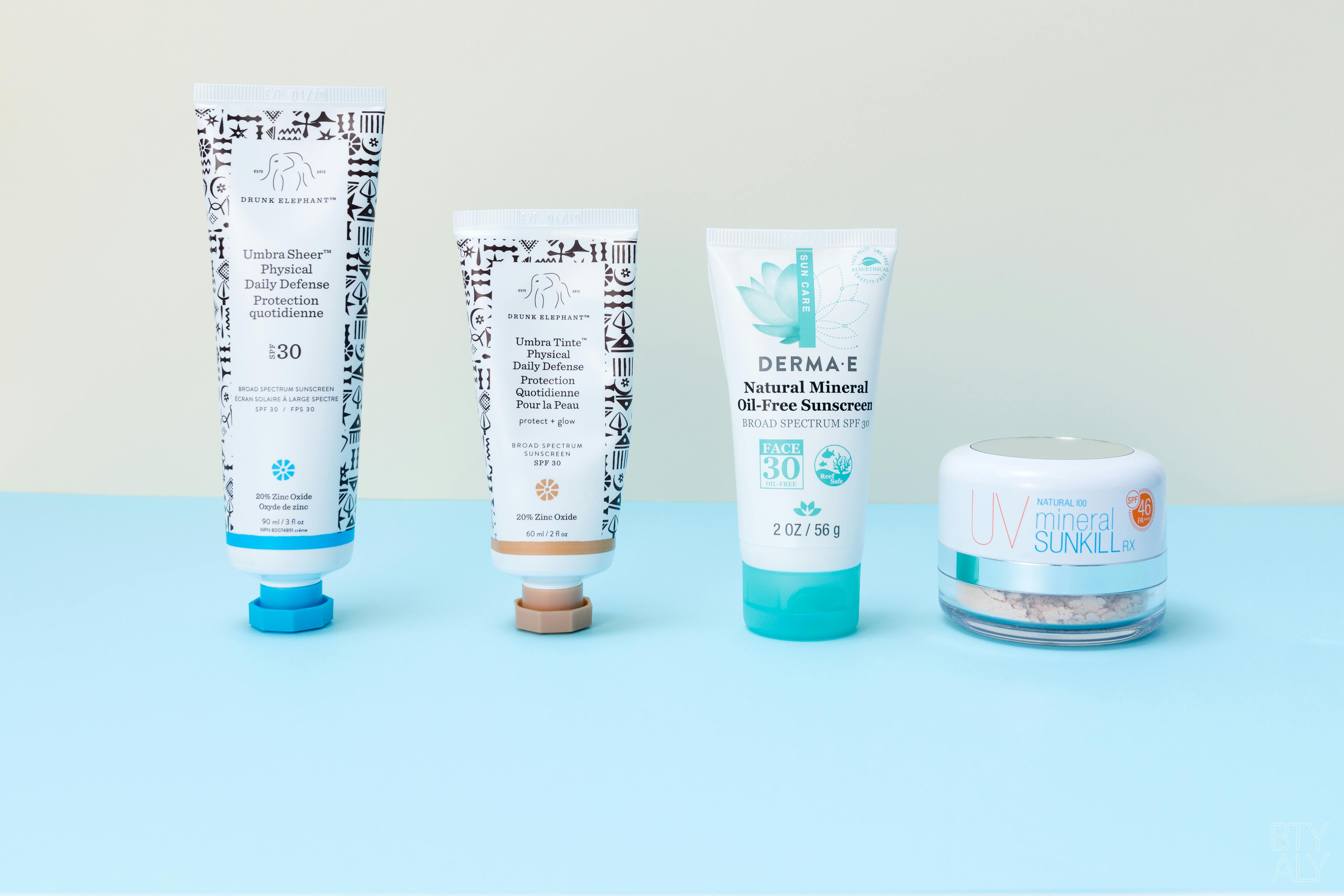
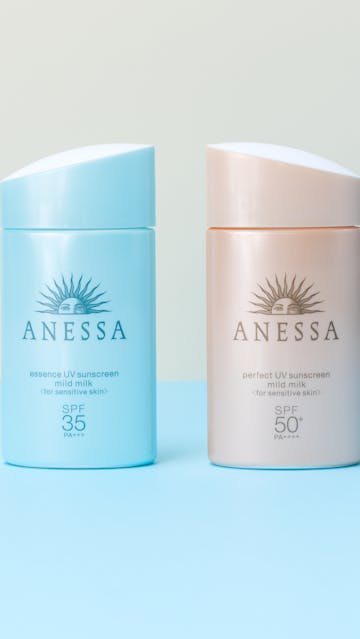
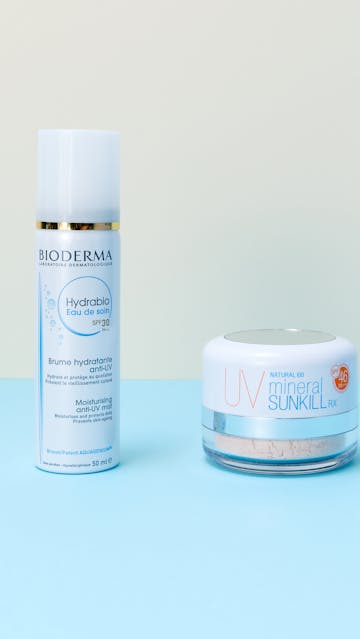
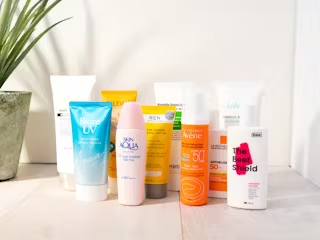







Brilliant, so informative, thank you!
Thank you for reading it ❤️❤️❤️
Do you have specific recommendations of sunscreen for acne prone skin, particularly for
an aging complexion? My face ranges from dry and flaky to acne all at once. I have learned alot from stumbling on your blog – thank you!
I’m so happy my posts were useful 👍
I wrote 2 face sunscreen guides, one last year and one this year. There are some great options there for acne prone skin!
Sunscreen Guide 2018
Sunscreen Guide 2019
I hope it helps ☺️
Hi, Love your articles, do you have a recommendation for a stick and spray sunscreen for kids? We are in America, but would love to try something from Asia or Europe, (or Australia)!
Hi Damian 😊
I’m going to be very honest but because I don’t have children, I’m not sure I’m the best person to be able to answer correctly here 😅
I can’t really speak from experience, sadly! But I guess if I had to choose a safe, very protective sunscreen for children, I would definitely choose one from the French pharmacy 😅
I guess I’m a bit biased and patriotic here. But they have great family size sunscreens sprays around summer in the pharmacys, which seem practical to use. I know La Roche Posay or Bioderma have sprays like that in their range. Haven’t tried them but if had to buy these kind of products, I would probably go for these 😉
Sorry I couldn’t help more ❤️
Thank you!!!
I don’t understand why you mentioned sunscreens aren’t reusable from one year to the next. Each sunscreen has an expiration date. That means the sunscreens are good up until that point.
No sadly, UV filters are quite fragile. And when you open your product, it reduces their shelf life. The expiration date is for an unopened product. Hope this clarifies! 🙂